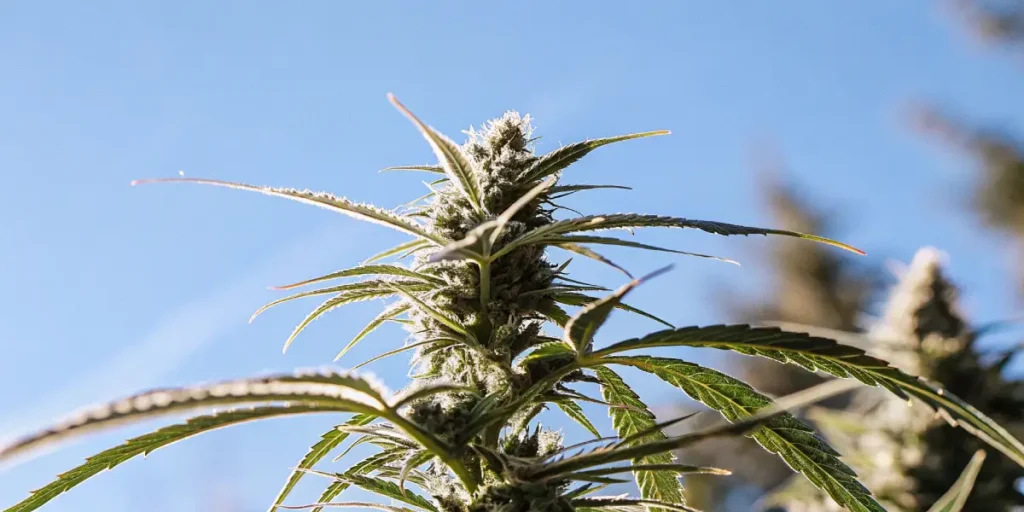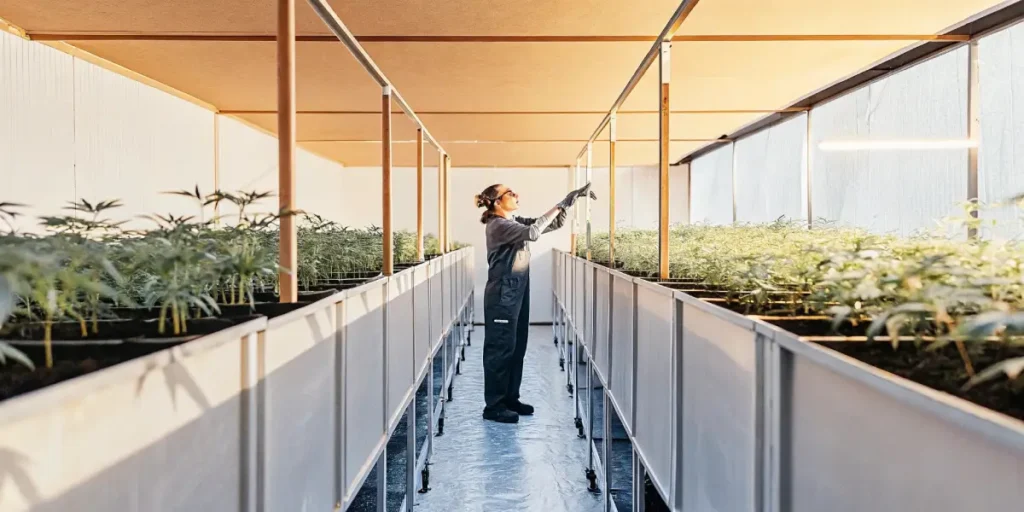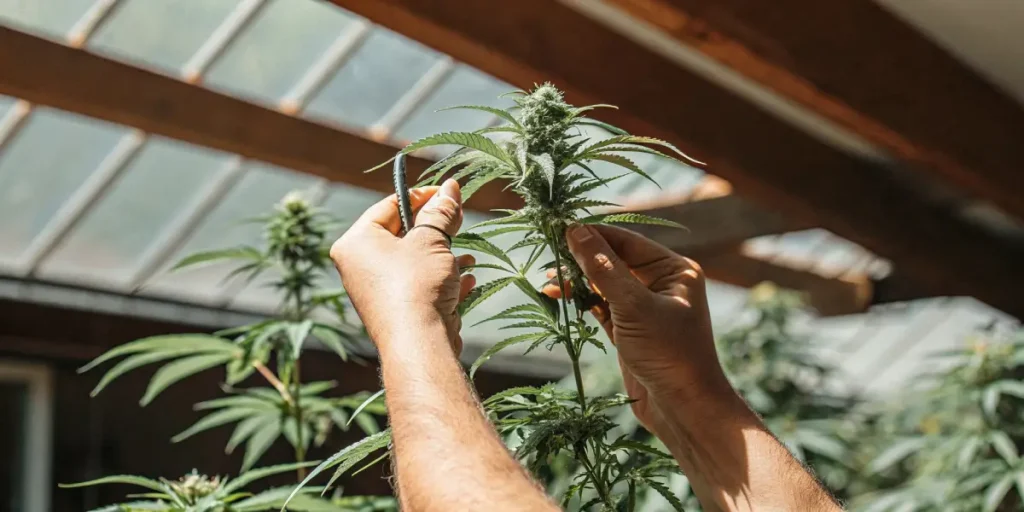Learning how to prune autoflowers can be a game-changer for both new and seasoned growers. This process helps your plants grow healthier and produce better yields. With the right techniques, you can make sure your autoflowering cannabis plants flourish.
Unlike traditional cannabis plants, autoflowers have a shorter lifecycle. This means knowing when to start pruning autoflower plants is crucial. Timing is everything, and the right approach can make all the difference in your final harvest.
Let’s dive into the best techniques for pruning autoflowering cannabis. Whether you’re dealing with White Widow Autoflower, Blueberry Autoflower, or Northern Lights Autoflower, these tips will help you get the most out of your grow.
When to Start Pruning Autoflower Plants
Timing is a big deal when it comes to pruning. Start too early, and you risk stunting your plant’s growth. Start too late, and you might not get the desired results. Generally, the best time to begin pruning is when your autoflower has about 3-4 sets of true leaves.
Keep an eye on the plant’s growth pattern. If you’re seeing more leaves and branches than the plant can support, it’s time to start trimming. This step-by-step guide to trimming autoflowers will help ensure healthy growth and a better yield.
Another key factor is the plant’s overall health. If the plant is not thriving, it might be best to delay pruning until it shows signs of vigorous growth. Knowing when to start pruning autoflower plants is essential to avoid unnecessary stress.
Remember, each strain may react differently to pruning. Some might require earlier interventions, while others might benefit from a delayed approach. Monitoring your plants closely will help you decide the optimal time for your specific strain.
Tools Needed for Pruning Autoflower Cannabis
Having the right tools makes all the difference. A good pair of pruning shears is essential. They allow for precise cuts without damaging the plant. Look for shears that are sharp and easy to handle, ensuring you can work efficiently.
In addition to shears, consider using small scissors for more delicate work. These are perfect for getting into tight spaces and trimming small leaves. Clean your tools before use to prevent spreading any diseases.
Investing in high-quality tools can save you time and effort in the long run. Durable materials and ergonomic designs ensure comfort during extended pruning sessions. It’s a worthwhile investment for any serious grower.
Furthermore, having a clean workspace and well-maintained tools minimizes the risk of introducing pathogens. This is a crucial aspect of learning how to prune autoflowers effectively, as plant health is paramount.

Step-by-Step Guide to Trimming Autoflowers
Start by inspecting your plant. Identify any dead or yellowing leaves. These should be your first targets. Removing them allows the plant to focus its energy on healthy growth.
Next, look for branches that are crossing or crowded. These can block light and air circulation. Trim these carefully to open up the plant and let it “breathe” better. This also helps in maximizing the impact of pruning on autoflower yield.
After addressing the obvious issues, take a step back and observe the plant’s overall structure. Consider the light exposure and airflow to different parts. This holistic view helps in planning more strategic cuts.
Gradually, you’ll develop a sense for the plant’s needs. This intuitive understanding is part of mastering how to prune autoflowers. With practice, you’ll make more confident decisions, enhancing both plant health and yield.
Best Techniques for Pruning Autoflowering Cannabis
One effective method is the “topping” technique. This involves cutting the main stem to encourage more lateral growth. This can lead to a bushier plant with more flowering sites. It’s especially useful for strains like White Widow Autoflower.
Lollipopping is another widely used technique. Here, you remove the lower branches and leaves that don’t get much light. This forces the plant to focus its energy on the top buds, resulting in a more potent harvest.
These best techniques for pruning autoflowering cannabis are adaptable to different growing environments. Whether indoors or outdoors, these methods can enhance plant structure and productivity.
Utilizing a combination of techniques can also be beneficial. Adapting your approach based on your plant’s growth patterns will ensure you get the most out of your pruning efforts.
Impact of Pruning on Autoflower Yield
Pruning can significantly impact the quality and quantity of your yield. By removing excess foliage, the plant can focus on producing larger buds. This is particularly noticeable in strains like Blueberry Autoflower.
However, it’s important to prune cautiously. Over-pruning can stress the plant and reduce its ability to produce. Balance is key. Monitor your plant’s response to pruning and adjust your techniques as needed.
Knowing the impact of pruning on autoflower yield is crucial for optimizing your harvest. Not only does it affect size, but also the potency and overall quality of the buds.
Balancing the removal of foliage with the plant’s growth cycle ensures that resources are directed towards bud development. This strategic approach maximizes both yield and potency.

FAQs
What is the best time to prune autoflowers?
The ideal time to prune autoflowers is when the plant has 3-4 sets of true leaves. This usually occurs a few weeks into the growth cycle. Starting at this stage allows the plant to recover quickly and boosts its overall health.
Timing can vary based on the specific strain and growing conditions. For example, Northern Lights Autoflower may require a slightly different schedule. Always monitor your plants and adjust accordingly.
Recognizing the signs of readiness is essential for effective pruning. Delaying pruning until the plant is robust enough to handle it can lead to more successful outcomes.
Each autoflowering strain may have unique growth patterns, so continuous observation and adjustment are key to determining the best time to prune.
Can pruning hurt my autoflower plants?
Pruning, when done correctly, is beneficial for your plants. However, over-pruning or cutting at the wrong time can stress the plant. This can lead to reduced growth and smaller yields. Always prune with caution and observe how your plant responds.
Using the right tools and techniques minimizes the risk of harm. Ensure your shears or scissors are sharp and clean, reducing the chance of infection or damage.
Learning how to prune autoflowers involves understanding the plant’s limits. Gentle and calculated cuts are less likely to cause adverse effects and promote better recovery.
By maintaining a balanced approach, you can enhance your plant’s growth without compromising its health or yield potential.
How often should I prune my autoflowers?
Pruning frequency depends on the plant’s growth rate and conditions. Typically, pruning every couple of weeks is sufficient. This allows the plant to recover and continue growing robustly.
Monitor your plants regularly. If you notice overcrowding or excessive leaf growth, it’s a sign that pruning is needed. Adapt your schedule to fit the specific needs of each plant.
Regular assessment helps in maintaining the plant’s optimal structure. Frequent but minor adjustments prevent the need for drastic interventions later.
Being proactive rather than reactive ensures that your plants remain healthy and productive throughout their growth cycle.
What are the benefits of pruning autoflowers?
Pruning helps improve light penetration and air circulation within the plant. This leads to healthier growth and bigger, more potent buds. It can also prevent mold and pest infestations by reducing dense foliage.
Additionally, pruning encourages the plant to focus its energy on producing flowers, enhancing the overall yield. Strains like White Widow Autoflower respond particularly well to these benefits.
Embracing the best techniques for pruning autoflowering cannabis can lead to significant improvements in plant vitality. The overall health of the plant is enhanced, contributing to better resistance against environmental stresses.
Moreover, strategic pruning can also simplify maintenance, making it easier to manage and care for your plants over time.
What tools do I need for pruning autoflower cannabis?
Essential tools include sharp pruning shears and small scissors. These allow for precise, clean cuts without damaging the plant. Keeping your tools clean is crucial to prevent disease spread.
Having a pair of gloves can also be beneficial to protect your hands and avoid leaving oils on the plants. Quality tools ensure efficient pruning and a successful growing experience.
Additional accessories, such as a magnifying glass, can aid in identifying smaller leaves and branches that need attention. These tools make the process more efficient and less stressful for the plant.
Ultimately, the right tools are an investment in the overall success of your grow. They contribute to the health and yield of your autoflowers by facilitating effective pruning practices.





